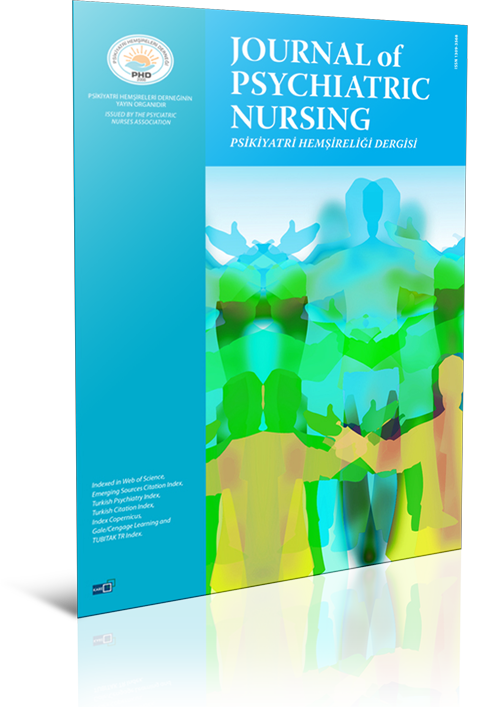
Emotional closeness in neonatal intensive care units: A qualitative study
Ayşe Gürol1, Kadir Şerafettin Tekgündüz2, Serap Ejder Apay3, Süreyya Özdemir4, Ramazan Güven51Department of Nursing, Erzurum Technical University Faculty of Health Sciences, Erzurum, Turkey2Department of Neonatology, Atatürk University Faculty of Medicine, Erzurum, Turkey
3Department of Midwifery, Atatürk University Faculty of Health Science, Erzurum, Turkey
4Medical Services and Techniques, Atatürk University Health Services Vocational School, Erzurum, Turkey
5Department of Emergency Medicine, Health Science University, Kanuni Sultan Süleyman Training and Research Hospital, İstanbul, Turkey
INTRODUCTION: The aim of this study was to explore perceptions and experiences of mothers with regard to the barriers and facilitators to emotional closeness and mothers feelings of emotional closeness when their newborn infants are cared for in neonatal intensive care units.
METHODS: This study applied a focus group methodology. The study group included a total of nine mothers who were staying in the Mother Room of the neonatal intensive care unit and agreed to participate in the study. For collection of data, a semi-structured emotional closeness form was administered through face-to-face interviews conducted with the participants in a suitable physical environment. A voice-recording device was used during the interviews.
RESULTS: In this study, the mothers described the main barrier preventing them from feeling emotionally close to their newborn as the inability to touch and be with their newborn in the units. They defined emotional closeness as the mutual recognition achieved between mother and child through physical closeness. The mothers further emphasized the importance of being face-to-face and having eye contact with their child, and they believed that touching increased maternal feelings of emotional closeness, as it provided the reality that this was their baby. Breastfeeding was another feature highlighted by the mothers as being an activity that made them feel emotionally close to their newborn infants.
DISCUSSION AND CONCLUSION: The findings from this study overall showed that when and how mothers feel emotionally close is grounded in the experiences and conditions that serve to either facilitate or debilitate emotional closeness.
Keywords: Emotional closeness, mother; neonatal intensive care unit; nursing; Turkey.
Yenidoğan yoğun bakım ünitesinde duygusal yakınlık: Kalitatif bir çalışma
Ayşe Gürol1, Kadir Şerafettin Tekgündüz2, Serap Ejder Apay3, Süreyya Özdemir4, Ramazan Güven51Erzurum Teknik Üniversitesi Sağlık Bilimleri Fakültesi, Hemşirelik Bölümü, Erzurum2Atatürk Üniversitesi Tıp Fakültesi, Yenidoğan Bölümü, Erzurum
3Atatürk Üniversitesi Sağlık Bilimleri Fakültesi, Ebelik Bölümü, Erzurum
4Atatürk Üniversitesi Sağlık Hizmetleri Meslek Yüksekokulu, Tıbbi Hizmetler ve Teknikler Bölümü, Erzurum
5Sağlık Bilimleri Üniversitesi, Kanuni Sultan Süleyman Eğitim ve Araştırma Hastanesi, Acil Tıp Kliniği, İstanbul
GİRİŞ ve AMAÇ: Bu çalışmanın amacı, annelerin duygusal yakınlıkta yaşadıkları engeller ve kolaylaştırıcı faktörler ile ilgili deneyimlerini ve algılarını, onların bebekleri Yenidoğan Yoğun Bakım Ünitesinde yattığı zaman içerisinde duygusal yakınlık ile ilgili hissettiklerini açıklamaktır.
YÖNTEM ve GEREÇLER: Çalışmada odak grup yöntemi kullanıldı. Yenidoğan yoğun bakım ünitesinde anne odasında kalan ve çalışmaya katılmayı kabul eden toplam dokuz anne çalışmaya katıldı. Verilerin toplanmasında yarı yapılandırılmış duygusal yakınlık formu kullanıldı. Görüşme boyunca ses kaydı alınarak anneler ile uygun bir ortamda yüz yüze görüşme tekniği kullanıldı.
BULGULAR: Çalışmada anneler duygusal yakınlık hissetmelerini engelleyen, bebekleri ile olma ve onlara dokunabilmeyi engelleyen sıkıntılı durumlar tanımladılar. Anneler özellikle bebekleri ile yüz yüze olma ve göz kontağı kurmanın önemini vurguladılar. Dokunmak, bebekleri olduğunu hissetmenin ve duygusal yakınlık hissetmeyi artırıcı bir faktör olarak bildirildi. Anneler emzirmenin bebeklerine karşı duygusal yakınlık hissetmenin en aktif yolu olduğunu vurguladı.
TARTIŞMA ve SONUÇ: Bu çalışmadan elde edilen bulgular, annelerin bebeklerine duygusal yakınlığını kolaylaştıracak veya azaltabilecek koşullar ve ne zaman ve nasıl duygusal yakınlık hissedebilecekleri ile ilgili bilgi vermektedir.
Anahtar Kelimeler: Anne, duygusal yakınlık; hemşirelik; Türkiye; yenidoğan yoğun bakım ünitesi.
Manuscript Language: English



















